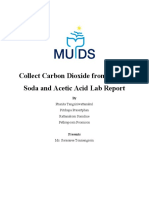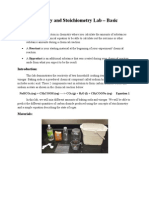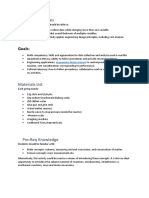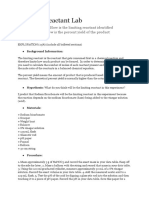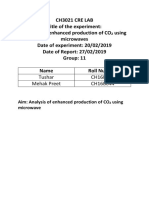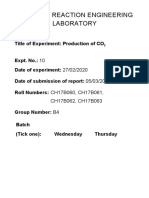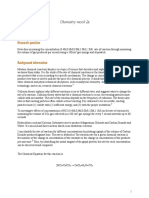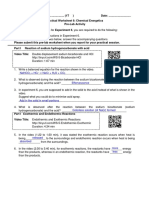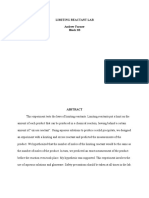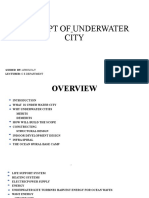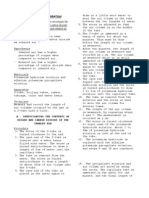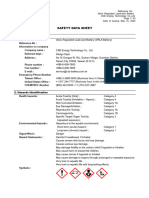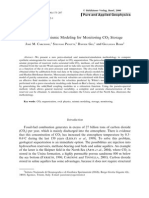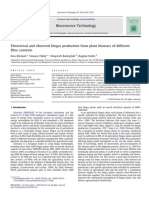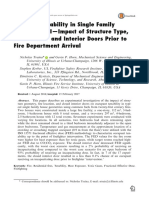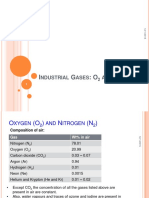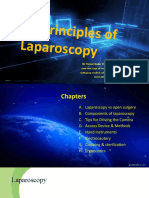PRACTICAL LABORATORY GUIDE: LIMITING REACTANT AND CO2 PRODUCTION
Introduction.
Objective:
This laboratory experiment aims to investigate the concept of limiting reactants by studying the reaction
between citric acid and sodium bicarbonate. Students will prepare a citric acid solution, calculate the
required amount of sodium bicarbonate to produce a specific volume of CO₂, and conduct the reaction to
observe the production of gas.
Background:
The reaction between citric acid (C₆H₈O₇) and sodium bicarbonate (NaHCO₃) produces carbon dioxide
(CO₂), water (H₂O), and sodium citrate (Na₃C₆H₅O₇). The balanced chemical equation for this reaction is:
3 NaHCO₃ + C₆H₈O₇ → Na₃C₆H₅O₇ + 3 CO₂ + 3 H₂O
In this experiment, one of the reactants will be in excess while the other will be the limiting reactant. The
limiting reactant determines the maximum amount of product that can be formed.
Materials:
Citric acid powder Rubber cork
Sodium bicarbonate powder 1 Beaker 600 mL
Water Aluminum spatula
100 mL graduated cylinder 10mL graduated pipette
Small funnel 1 Suction pear for the pipette
Rubber tubing 1 Dropper
2 Beaker 50mL 1 Volumetric flask of 100mL
Scientific Balance 1 Filter paper
Detachment flask
Procedure:
1. Prepare the citric acid solution:
• Weigh out the calculated amount of citric acid powder (based on your desired concentration and
volume).
• Dissolve the citric acid powder in approximately 20 mL of distilled water in a 100 mL beaker.
� • Transfer the solution to the flask.
• Add water until the solution reaches the 100 mL mark.
2. Calculate the mass of sodium bicarbonate:
Use the balanced chemical equation and stoichiometry to calculate the mass of sodium bicarbonate
needed to produce 50 mL of CO₂ at standard temperature and pressure (STP).
Hint: ideal gases laws is needed to calculate the moles of CO2 (PV=nRT)
3. Set up the gas collection apparatus:
• Fill the large test tube with water and invert it into the beaker filled with water.
• Insert the rubber tubing into the mouth of the test tube.
• Connect it to the detachment flask.
• Watch the following video for reference: https://www.youtube.com/watch?v=ozko7fkg4Ko
4. Conduct the reaction:
• Carefully pour 10 mL of citric acid solution into the detachment flask.
• Wrap the sodium bicarbonate in paper.
• Add the paper with the sodium bicarbonate to the detachment flask.
• Quickly put on the rubber cork.
5. Collect the CO₂:
• As the reaction proceeds, CO₂ will be produced and displace the water in the test tube.
• Record the volume of water displaced, which corresponds to the volume of CO₂ produced.
• Delivery Report (APA format), containing the following:
A. Title: Investigation of Limiting Reactants: The Production of CO₂ from Citric Acid and Sodium
Bicarbonate
B. Introduction: Briefly explain the concept of limiting reactants and its importance in chemical
reactions.
C. State the objectives of the experiment.
D. Materials and Methods: List all the materials used in the experiment. Describe the procedure step-
by-step, including any modifications made.
E. Results: Present the data collected, including the mass of sodium bicarbonate used, the volume of
CO₂ produced, and any other relevant measurements.
F. Data Analysis:
a. Calculate the theoretical yield of CO₂ based on the limiting reactant.
b. Compare the theoretical yield with the experimental yield and calculate the percent yield.
c. Analyze any sources of error that might have affected the results.
G. Conclusions:
a. Summarize the main findings of the experiment.
b. Discuss the concept of limiting reactants and its relevance to the experiment.
c. Evaluate the accuracy of the results and suggest possible improvements for future
experiments.


